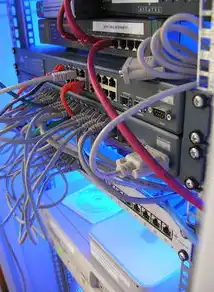HTTP 500 Internal Server Error is a common issue encountered by web developers and administrators. This error indicates that an unexpected condition was encountered on the server while processing a request. In many cases, this error is related to PHP scripts running on a server. Here's a comprehensive guide to troubleshooting and resolving this issue.

图片来源于网络,如有侵权联系删除
Understanding HTTP 500 Internal Server Error
The HTTP 500 status code signifies that the server has encountered an internal error and cannot complete the request. When dealing with PHP applications, this often means there's an issue within the PHP script itself or in its configuration.
Common Causes of HTTP 500 Errors
- PHP Script Errors: Syntax errors, missing files, or incorrect file paths can cause these errors.
- Server Configuration Issues: Incorrect settings in
php.inior web server configurations like Apache or Nginx can lead to errors. - Resource Limits: Exceeding memory limits (
memory_limit) or maximum execution time (max_execution_time) specified inphp.ini. - File Permissions: Incorrect file permissions might prevent PHP from executing certain operations.
- Database Connectivity Problems: Issues with database connections can also trigger 500 errors if your application relies heavily on databases.
Step-by-Step Troubleshooting Process
Check Server Logs
Firstly, examine the server logs for detailed error messages. These logs can provide specific information about what went wrong:
- For Apache servers, check
/var/log/apache2/error.log. - For Nginx servers, look at
/var/log/nginx/error.log.
Look for lines containing "PHP" along with the error message. This will give you clues about where the problem lies.
Enable Display_errors in PHP
To get more insights into the exact location of the error, temporarily enable error display in PHP by adding the following line to your php.ini file:
display_errors = On
Then restart the web server to apply changes. Now, when an error occurs, it should be displayed directly on the page, making it easier to identify the problematic part of the script.
Increase Memory Limit
If your PHP script requires more memory than allocated, increasing the memory_limit setting could resolve the issue. Add the following line to your php.ini file:
memory_limit = 256M
Adjust the value based on your needs but keep in mind that setting it too high may consume excessive resources.
Check File Permissions
Ensure all necessary directories and files have correct permissions. Files typically need to be writable by the web server user, while directories should generally be readable and executable. Use commands like chmod to adjust permissions as needed:
chmod 755 /path/to/directory chmod 644 /path/to/file.php
Verify Database Connections

图片来源于网络,如有侵权联系删除
If your application uses a database, ensure that connection details are accurate and that the database server is accessible. Test connectivity using tools such as mysql -u username -p password -h hostname database_name. If you encounter any issues here, they must be resolved before proceeding further.
Clear Cache and Temporary Directories
Sometimes temporary files or cached data can interfere with proper execution. Clear out cache directories and temporary files associated with your PHP application. For example, if you're using APCu or Redis for caching, clear their respective caches.
Update PHP and Related Components
Make sure all components related to PHP (e.g., extensions, libraries) are up-to-date. Outdated versions may contain bugs or security vulnerabilities that could cause errors.
Review Code for Common Mistakes
Manually review your PHP code for potential mistakes:
- Ensure all functions and variables are correctly defined.
- Avoid using deprecated features.
- Validate input data thoroughly to prevent injection attacks.
- Handle exceptions properly using try-catch blocks.
Consult Documentation and Community Forums
For specific issues not covered above, consult official documentation or community forums like Stack Overflow. Other developers may have encountered similar problems and shared solutions.
Preventive Measures
Preventing HTTP 500 errors involves proactive maintenance:
- Regularly update PHP and dependencies.
- Implement robust error handling mechanisms in your code.
- Monitor server performance and resource usage.
- Keep backups of critical files and configurations.
By following these steps and best practices, you can effectively troubleshoot and resolve HTTP 500 Internal Server Errors related to PHP, ensuring smoother operation of your web applications. Remember that thorough testing and continuous monitoring are key to maintaining a stable environment.
标签: #http 500 内部服务器错误 php



评论列表